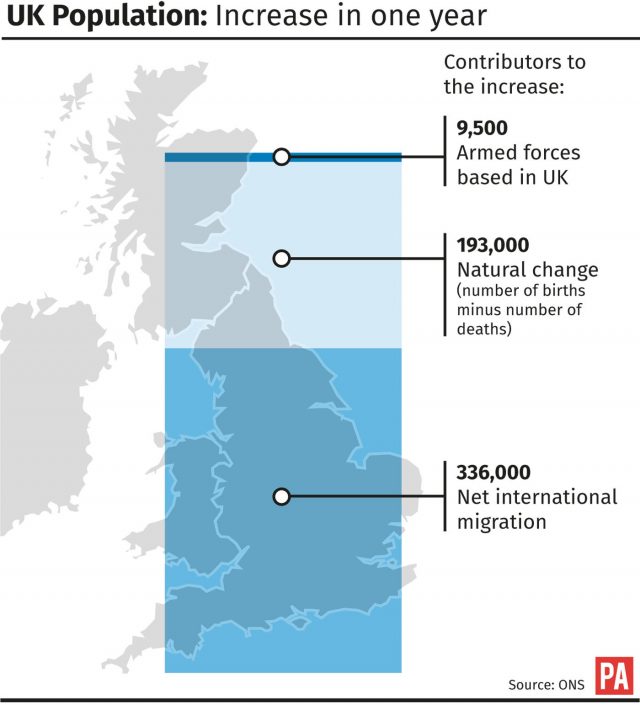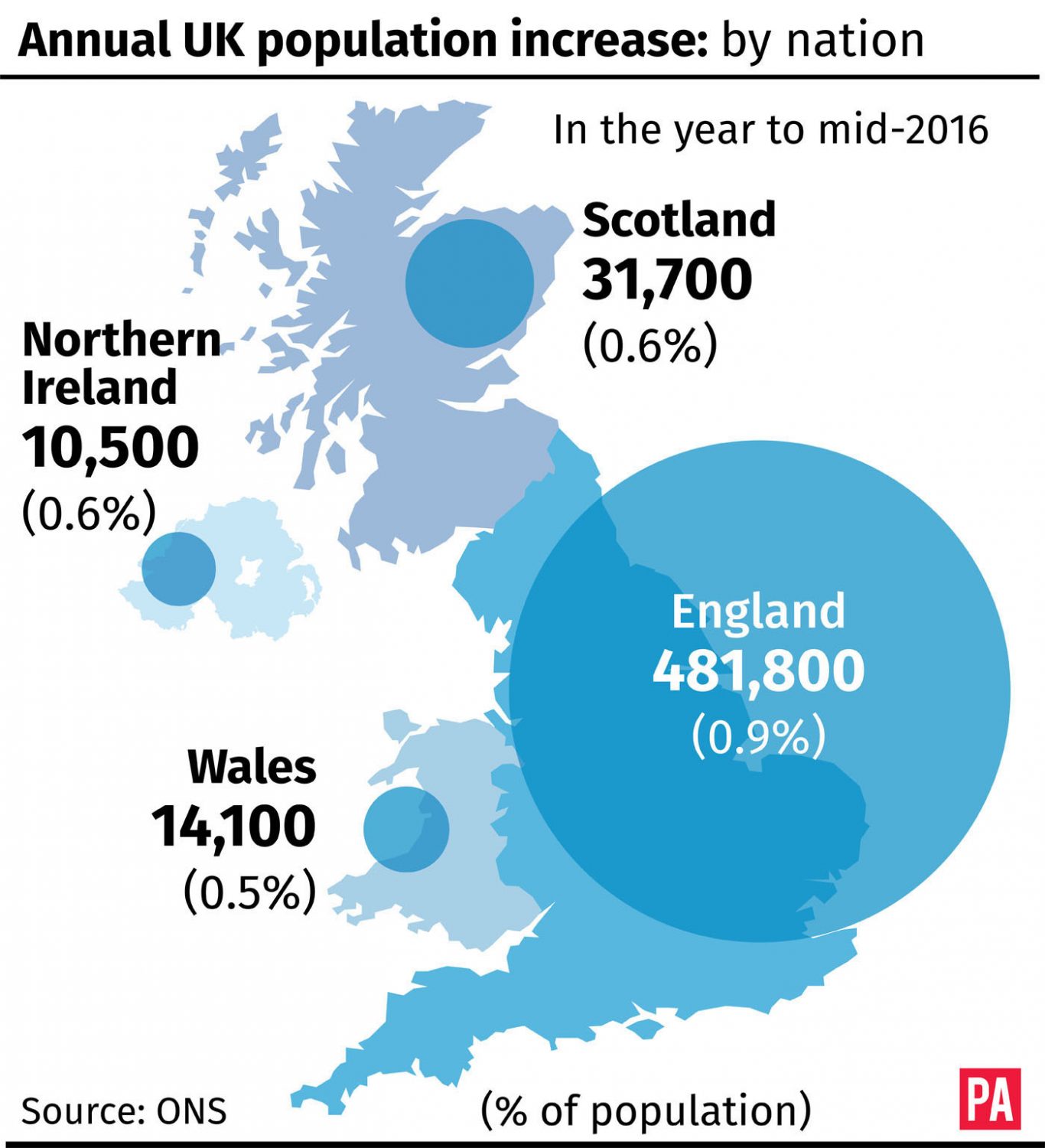
The population of the UK has seen its sharpest annual increase in nearly 70 years, official figures have revealed.
Demographers’ latest calculations show there were an estimated 65,648,000 people living in the country at the end of June last year.
Over the 12 months to the middle of 2016, the number of inhabitants went up by 0.8%, or 538,000 – an increase roughly equivalent to the population of Bradford.

In numerical terms this is the largest rise since 551,000 in the year to mid-1947, which was caused mainly by a rise in births in the post-war baby boom.
The Office for National Statistics (ONS) said net international migration continued to be the main driver behind the growth, while there was also a rise in births and fewer deaths.
Natural change – the number of births minus the number of deaths – of 193,000 accounted for just over a third (35.8%) of the overall increase. Nearly two thirds (62.4%) was down to net international migration of 336,000.
UK population grew by 0.8% in the year to mid-2016 https://t.co/dx4DWIrWpy pic.twitter.com/coRjOKMVCi
— Paul Vickers (@PaulVickers_ONS) June 22, 2017
In addition to the direct impact of migration on the size of the population, current and past international migration also has indirect effects on the size of the population as it changes the numbers of births and deaths in the UK, statisticians said.
The population of England grew the fastest, and has now exceeded 55 million for the first time, while London’s growth rate was more than twice that in Wales, Scotland and Northern Ireland.

Neil Park, head of the Population Estimates Unit at the ONS, said: “The population of the UK continued to grow in the year to mid-2016 at a similar rate to that seen over recent years. Net international migration continued to be the main driver, but there was also an increase in births and fewer deaths than last year.”
Largest driver of mid-2016 population growth was net migration (62%); but births increased, deaths decreased https://t.co/dx4DWIrWpy pic.twitter.com/sOyLMUhh78
— Paul Vickers (@PaulVickers_ONS) June 22, 2017
In the 11 years between mid-2005 and mid-2016, the population of the UK increased by just over five million people. The previous increase of five million took 35 years, between 1970 and 2005.
England saw the biggest jump in population over the year, with a rise of 481,800, or 0.9%, to 55,268,100. The population of Scotland increased by 31,700 (0.6%) to 5,404,700, Wales saw a 14,100 increase (0.5%) to 3,113,200, and Northern Ireland’s population was up by 10,500 (0.6%) to 1,862,100.
Most local authorities saw rises in their total population, and of 26 which showed falls, 17 were in coastal areas.
Eight of the 14 authorities where population went up by 2% or higher were in London.
Statisticians also reported that the UK population continues to age but at a slower rate than in recent years.


Comments: Our rules
We want our comments to be a lively and valuable part of our community - a place where readers can debate and engage with the most important local issues. The ability to comment on our stories is a privilege, not a right, however, and that privilege may be withdrawn if it is abused or misused.
Please report any comments that break our rules.
Read the rules hereLast Updated:
Report this comment Cancel